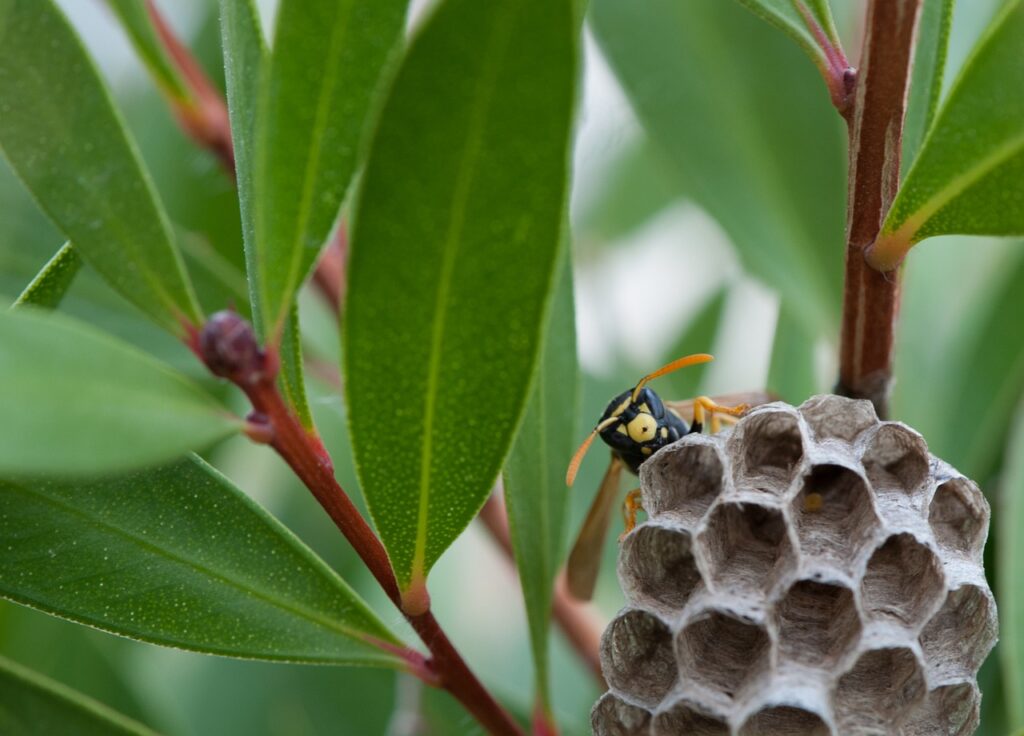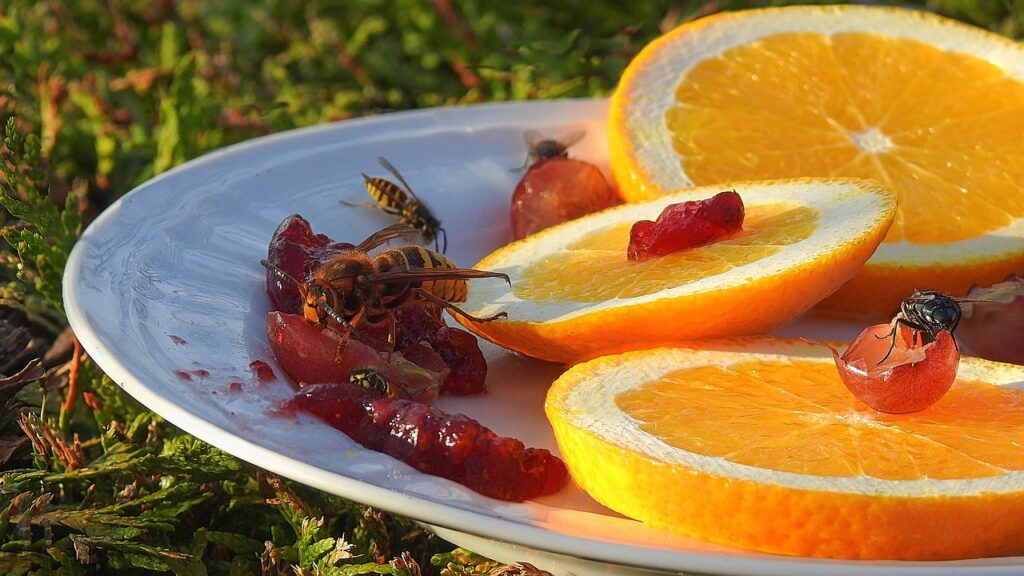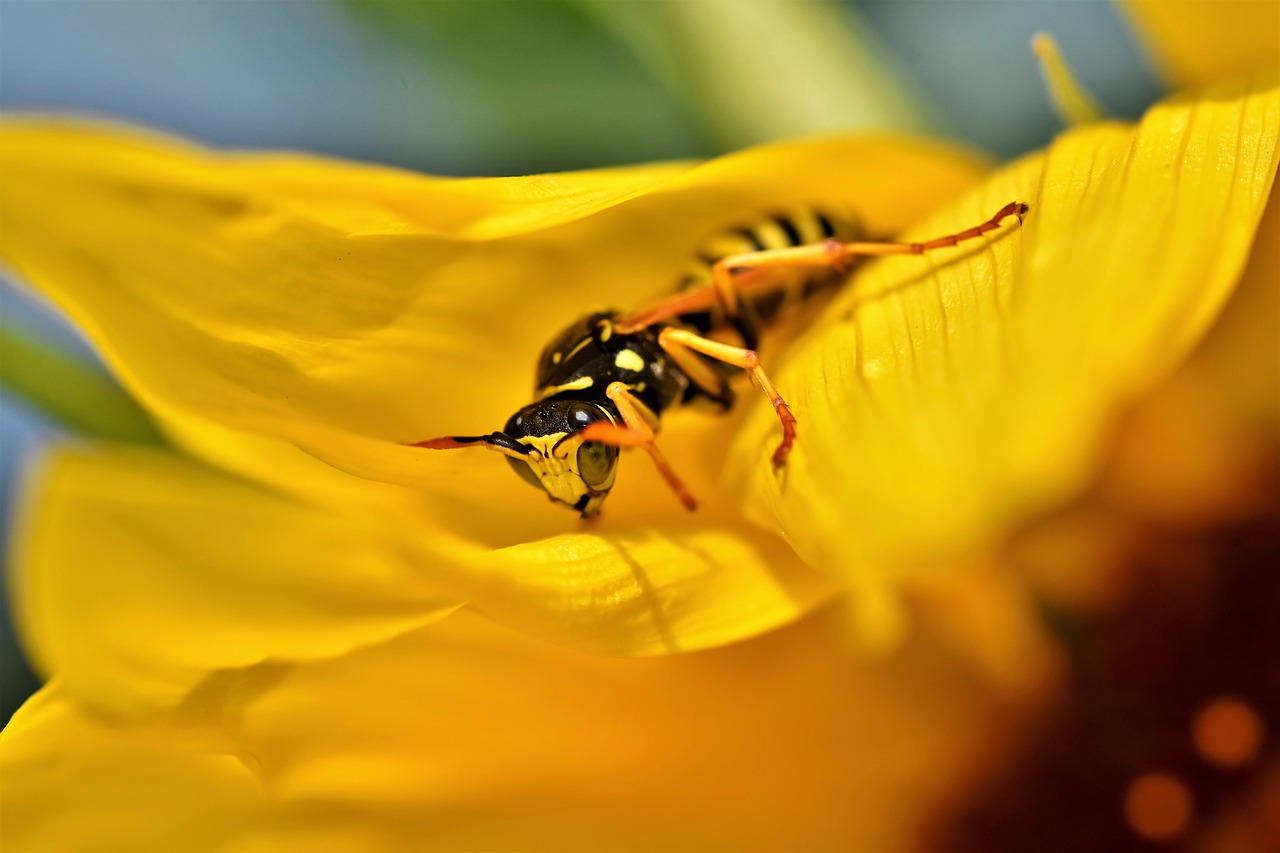Wasps are not really welcome on your property. Ok, they can serve as pollinators, but they are harmful and troublesome. It is better if they serve their role in nature far from your home. But if there are wasp nests in your area, it is hard to keep wasps away. Here is everything you need to know about wasp nests – to minimize the risk of having wasps on your property.
What do wasp nests look like?
Wasp nests look like they have been built using a paper-like material or mud. This is because they are made of chewed wood or clay, depending on the kind of wasp. They start small, often just the size of a walnut or a golf ball. But as the Queen wasps build, their nest can become bigger and bigger. It can even be as big as a football. Wasp nests are also not necessarily spherical. The shape adjusts to the surroundings.
You should be particularly wary of wasps and wasp nests in the summer where they are more prominent. You will usually find them in a structure on your property or on the ground, depending on the kind of wasp. Some wasps can build nests on decks, eaves, patios, and other structures in your home with easy access to the outside. Some build deep into the ground, like in concrete, your driveway, or under rocks.

Why should you be concerned of wasps?
Wasps are very aggressive. They will fight off everything that appears like a threat to their nest. If their nest is on your property where they can easily see you, it’s easy for them to assume that you are a threat. They can attack even if you don’t actively provoke them.
Wasps, unlike bees, can sting multiple times. They inject venom into your body and your immune system can trigger an allergic reaction. This can result in itching and swelling, not to mention pain. Usually, the allergic reaction is just a simple inconvenience. But they can also be life-threatening. Severe allergic reactions can result in difficulty breathing and swelling in the throat.
Humans are not the only ones at risk. Even your pets are at risk of wasp stings. You can even say that pets are more vulnerable because they tend to play with curiosities like wasps. But the wasps will surely take it the wrong way and harm them.
How do you know if you have wasp nests at home?
It’s easy to know if you have a wasp infestation. If you see wasps buzzing around your property, you may have a wasp problem on your hands. Be on the lookout for wasps in the summer when they are more prominent.
Even though it’s simple to identify a wasp infestation, it can also be easy to miss. When the wasp population is low, you may not even notice their activities on your property. You may only notice them when their population is already in their hundreds or thousands. Fully matured wasp nests are harder to deal with as the wasps become more aggressive.
You should be vigilant. Always look at the spots in your home where wasps can thrive, especially during summer.
How do you find the wasp nests troubling your home?
You can find the wasp nests on your property by following the wasps buzzing around. If you observe the wasps, you will eventually see a flight pattern. You will notice that they come and go in a single location. This location is most likely their nest.
But remember that wasps are more active during daytime. It may not be a good idea to go to the location when the sun is still high. Consider confirming the location of the wasp nest at night.
Most of the wasps are already back into their nest at night, so it’s also the ideal time to get rid of the nest. You will surely eliminate a huge portion of the wasp population. However, it’s really not recommended to DIY your way out of your wasp problem. Wasps are just too dangerous to be handled by inexperienced homeowners.
How do you get rid of the wasp nests?
It’s best to hire professional pest controllers to handle the wasp infestation on your property. They have the necessary knowledge and gear to effectively and safely deal with the situation. The problem with dealing with the wasp infestation yourself is that you are putting yourself at risk of aggressive wasps and their stings. They won’t appreciate you destroying their home, so of course, they will attack. You are simply not equipped with the right tools to deal with this problem.
But if you really want to do it yourself, make sure to do it at night where the wasps are less active and more packed in their nest. Bomb their nest with a generous amount of insecticide specially formulated for wasps. But make sure you are wearing protective gear like face masks, goggles, long sleeves, pants, and gloves.
If the wasp nest is deep under the ground, pouring boiling or soapy water may work too. Just make sure to pour directly into the nest entrance.

How do you avoid wasp nests in the future?
The first thing you should do is to completely clear the existing infestation, including the nest and the structural damage it has caused. The holes and tunnels the wasps have left behind can be very attractive not just to new wasps, but also to other kinds of pests like bees. This is why you should close them.
There are many ways to avoid future wasp infestations. Remember that pest infestations exist because the pests can find resources on your property. If they can’t find resources, they are not likely to settle. Remove any food and water sources that may attract wasps, like trash bins and unattended pet food.
You can also take advantage of the wasp’s territorial nature. You can set up a fake wasp nest somewhere on your property. If wasps see this, they will stay away knowing that the area is already occupied by another colony.

